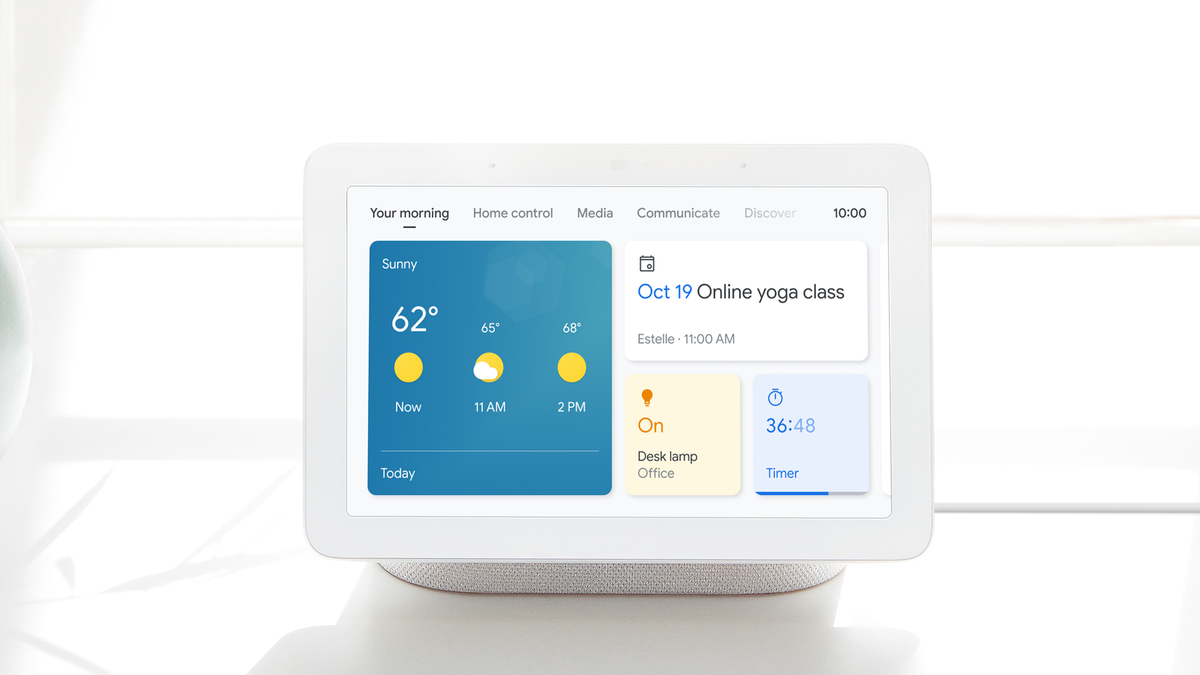
The role of smart home devices powered by artificial intelligence has rapidly evolved from Objects used to answer simple inquiries are tools that can help control different aspects of your home. However, with a major software update for Google smart displays, Google is trying devices like Nest Hub And the Lenovo Smart Display In real smart home command centers.
The main driver for this update is an all-new software experience and user interface that divides smart screen functions into five main categories: day, home, media, communication, and discovery.
The Your Day section is designed to be a central place for you to easily check things like weather, upcoming events, current timers, and more. Instead of being relatively static like a traditional calendar app, the content in the Your Day section dynamically changes depending on the time of day to highlight your most important activities, making your morning, afternoon and evening as needed.
The next section is Home Control, which acts as a central location to quickly manage all of your connected smart home devices. Controlling the home is a big change in the way you use smart screens to interact with smart home gadgets, because before, to do something like adjust smart lights, you had to use a voice command to activate the smart screen, then access to adjust brightness. But with the new Home Control tab, you can simply turn the lights on or off or adjust the brightness with just a few clicks, without the need for voice commands.
at the same time, For the media segment, Google created a place to easily control music, watch what’s playing around the house, or even use your smart screen as a mini TV thanks to improved support for video streaming services such as YouTube, YouTube TV, Netflix, and Disney + ( With more on the way). And if you are not in the mood for music, you can also use the Media tab to help follow your favorite audio files.
G / O Media may receive a commission
Next up is the Communicate tab, which is designed around different ways of communicating with others, whether family members or co-workers, depending on the situation. For the family, Communicate provides quick access to a list of saved phone numbers, a handy button in case you want to broadcast a message to another smart screen or smart speaker elsewhere in your home, and more.

Alternatively, when it comes to work, the Communicate tab can be used to host meetings via Google Meet (with Zoom scheduled for later this year). It includes support for up to five accounts (so you can add work and personal accounts) and the ability to cancel meetings directly on the smart screen. And for anyone who has a file Nest Hub Max, Google will also use the Nest Hub Max’s built-in camera and tracking technology to help make sure your face stays in the center of the video.
Finally, there is the Discover tab, where you’ll find suggestions for things like new recipes you can try, new artists to check out, and prompts to test out Smart Display features that might be useful to you (or that you might simply not know to like. Put google translate).
Aside from revamping the main user interface, Google also introduces some useful new features including an original dark theme that can be set to automatically turn on at night, a selection of built-in ambient sounds to help you sleep, and a sunrise alarm, which Similar to what you get on Pixel and It helps you wake up gradually by increasing the brightness slowly and changing the color of the smart screen display 30 minutes before you set the alarm to go off.

Even while the idea is there The screens or smart screens throughout your home are still relatively new (and potentially very strange for people who are not super tech-savvy). With this update, Jack Krausek, director of product management at Google, hopes to introduce smart screens in The second “stage of growth, transforming smart displays from fancy picture frames and recipe guides into something much like the real smart home command center that Google promised years ago.”
Google’s new smart screen experience will begin appearing today on all smart screens with screens 7 inches and above, and it is expected to take about a week to reach 100% of users (and it is expected that Google Meet integration will take an additional week before it becomes fully available) .












































